This easy gluten free sourdough bread recipe is a delicious alternative to the wheat-based version of sourdough bread, that is often not accessible for people who can’t eat gluten.
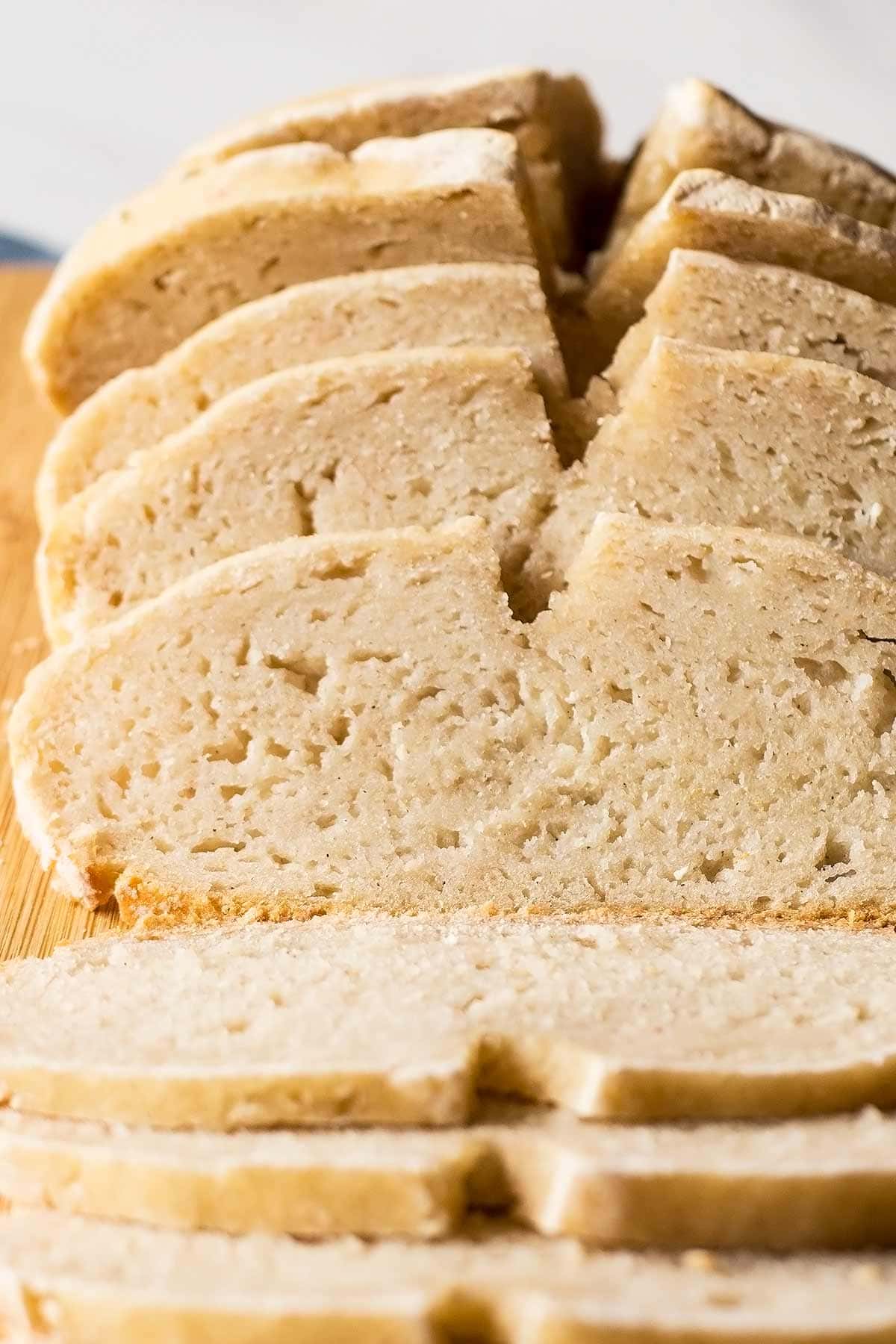
Jump to:
Sourdough Vs. Gluten-Free Sourdough
The most common version of sourdough bread includes white flour, salt, water, and sourdough starter. The sourdough starter adds a slightly sour taste to the baked bread, improves the texture, and helps the dough rise during baking. Sourdough starter is traditionally made with two ingredients; white flour and water.
The mixture sits for several days while undergoing repeated feedings of both flour and water until it becomes active enough with yeast to aid in successful bread making.
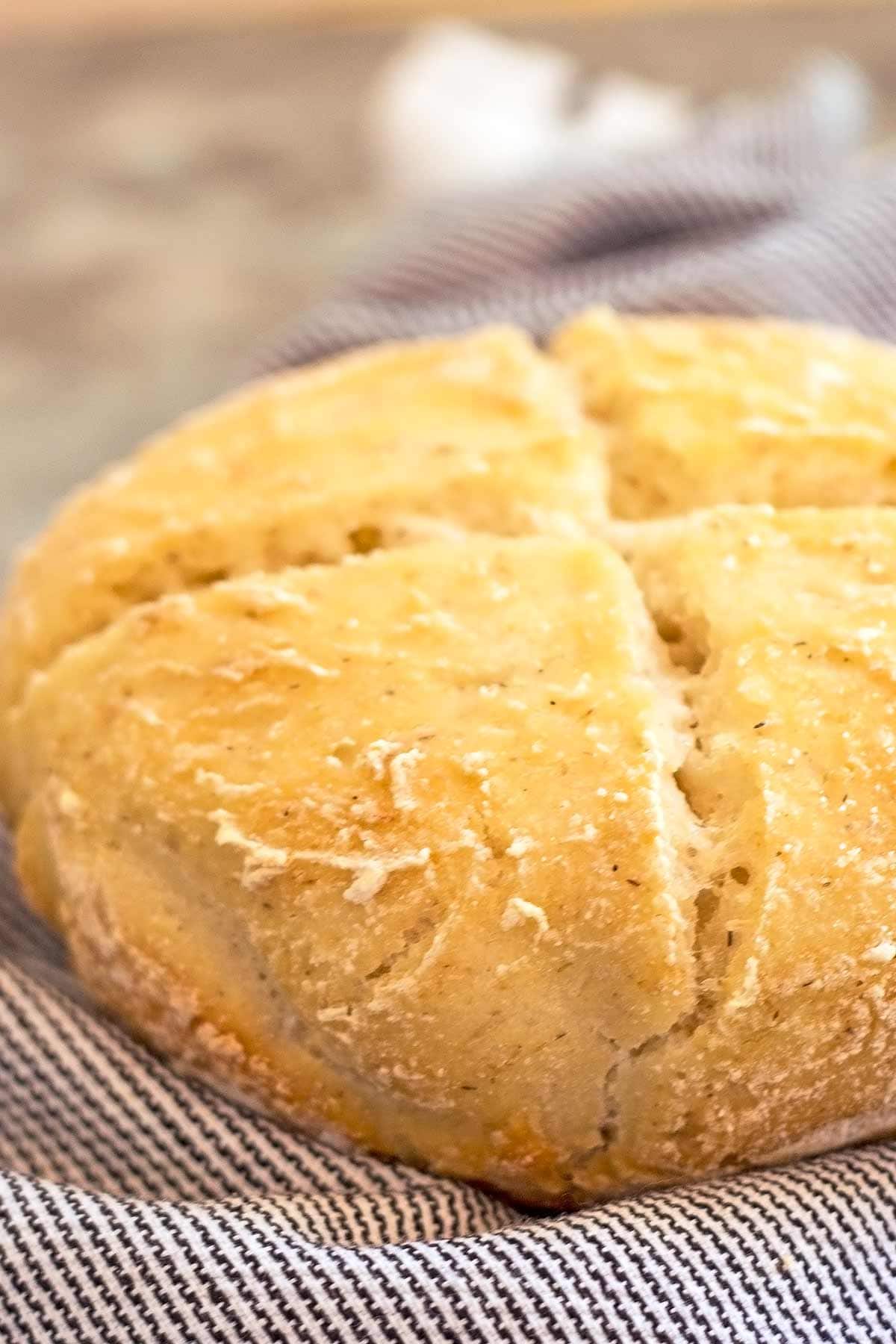
While someone may love the smell, taste, and texture of traditional sourdough, they may not be able to eat it if they eat a gluten free diet. There is a gluten free sourdough recipe that can make all the difference, though. Rather than using wheat flour, gluten-free sourdough includes a gluten free flour blend with xanthan gum, such as Bob's Red Mill 1-to-1 Flour.
This blend includes white rice flour, brown rice flour, potato starch, tapioca starch, sorghum flour, and xanthan gum. Additionally, the sourdough starter is gluten free through the use of gluten free flour.
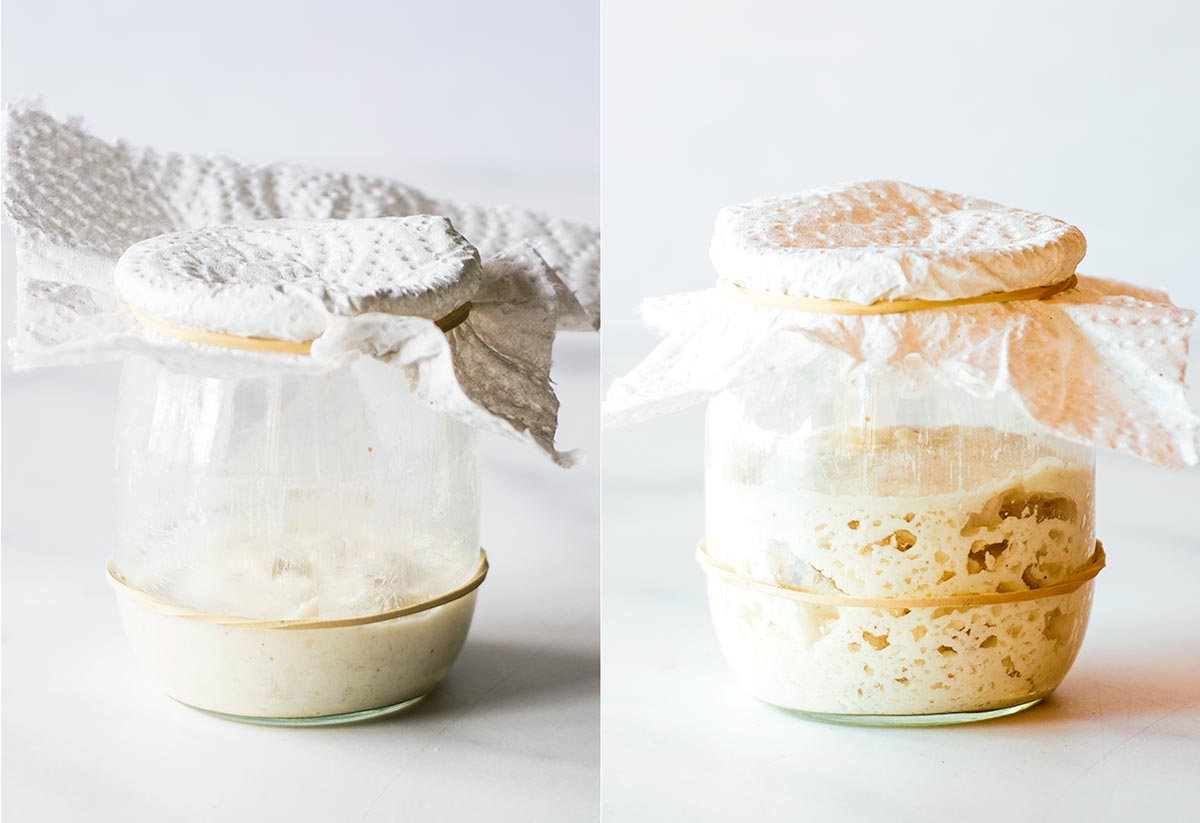
Can You Make Gluten-Free Sourdough Starter?
Yes, you can make gluten-free sourdough starter. In fact, the process, like other gluten-free baking, is relatively simple and very similar to making a traditional sourdough starter. The way you make a starter is quite easy. Basically, you stir the gluten free flour with water in a jar, cover it, and allow it to sit at room temperature for a day before feeding it with more water and flour.
The wild yeast and bacteria in the environment cause the starter to develop over time. Then, that process is continued until the starter doubles in size, forms bubbles and is active enough to use in your bread recipes. You can find my Gluten-Free Sourdough Starter recipe here, which you can make before preparing this sourdough bread recipe.

Gluten Free Sourdough Bread Ingredients & Tools
The ingredients and tools needed for the recipe are few and simple. The bread is made of just active gluten free starter, filtered water, gluten free flour blend, and salt.
You'll also need a bowl for mixing and fermenting the dough in. As well as a spatula, some parchment paper, an oven-safe glass bowl with lid or aluminum foil cover or a Dutch oven for baking the bread in.
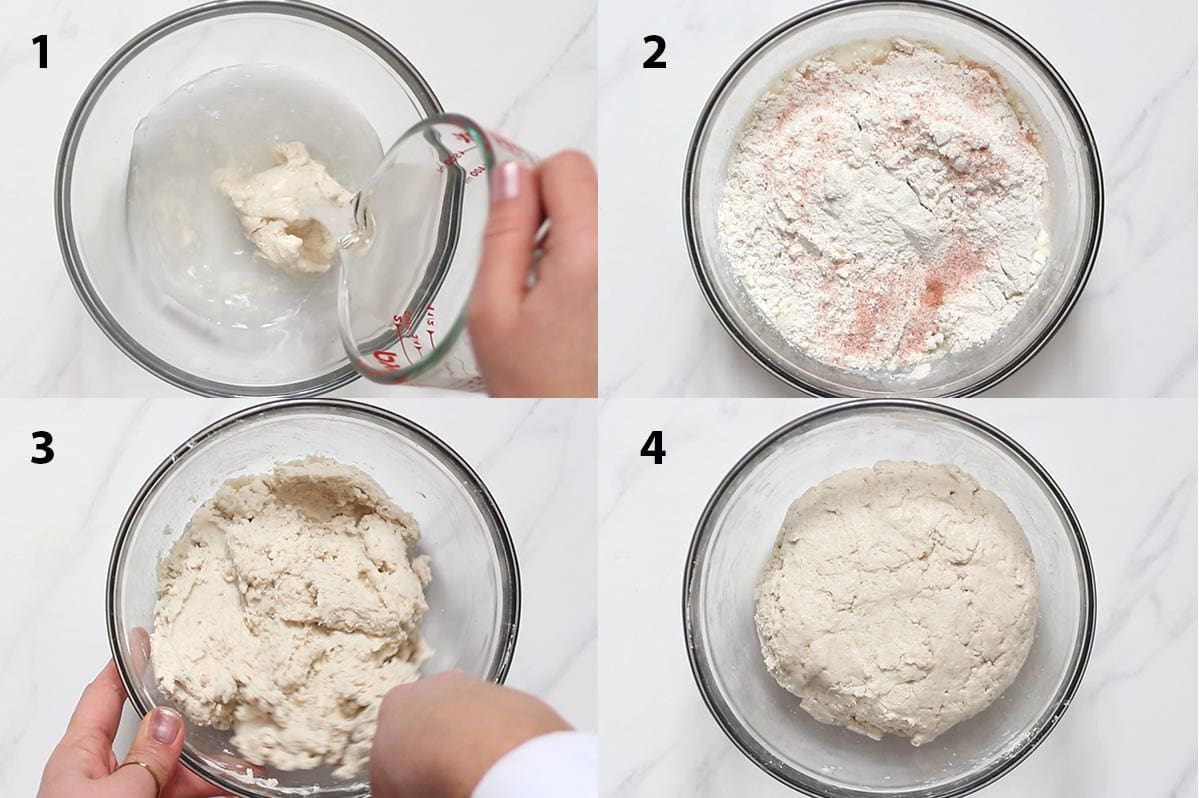
How to Make Gluten-Free Sourdough Bread Instructions
1. To make this gluten-free bread loaf, you begin by mixing your active bubbly gluten-free starter with the filtered water in a bowl until combined.
2. Then, you add the dry ingredients, gluten-free flour blend and sea salt.
3. Stir the mixture with a spatula or wooden spoon until it combines into a uniform mass. Alternatively, the mixing can also be done in a stand mixer.
4. Shape the dough into a ball inside the bowl. Then, cover the with a lid, plastic wrap, or tea towel, and allow it to proof at room temperature for 12 to 18 hours before moving to the next step.

During the fermentation time the dough ball will expand significantly. And if you use a transparent bowl, you'll be able to see from the sides how active and bubbly the dough becomes.
Getting the Dough Ready to Bake
When you are getting close to being ready to bake the dough, you should preheat your oven to 450°F with an oven-safe baking dish like a cast iron Dutch oven or Pyrex glass bowl for about 30 minutes.
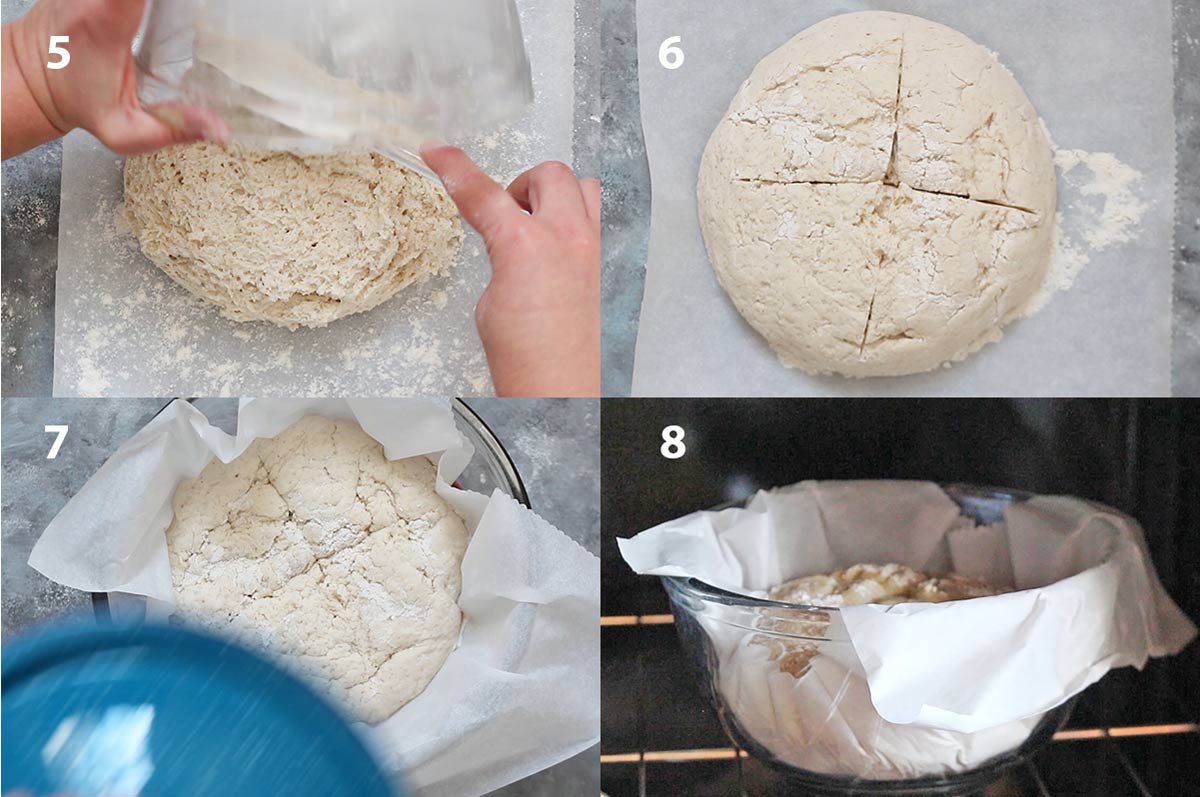
5. Next, dust a sheet of parchment paper with some gf flour and turn the dough onto it.
6. Dust the dough with a little flour to make it easier to gently shape and press it into a ball with your hands. Optionally, score the top with a sharp knife or lame.
Baking the Bread
7. Carefully lift the parchment paper up with the round of dough on it and place it in the heated bowl or Dutch oven. The bread should bake covered for a total of 30 minutes. Use any oven safe lid or aluminum foil in a pinch. Covering is important here as it will allow the bread to steam, which helps with achieving a crisp textured crust.
8. After the 30 minutes are up, though, you can remove the cover to allow the bread to become pleasantly golden brown during the last 15-20 minutes of baking time.
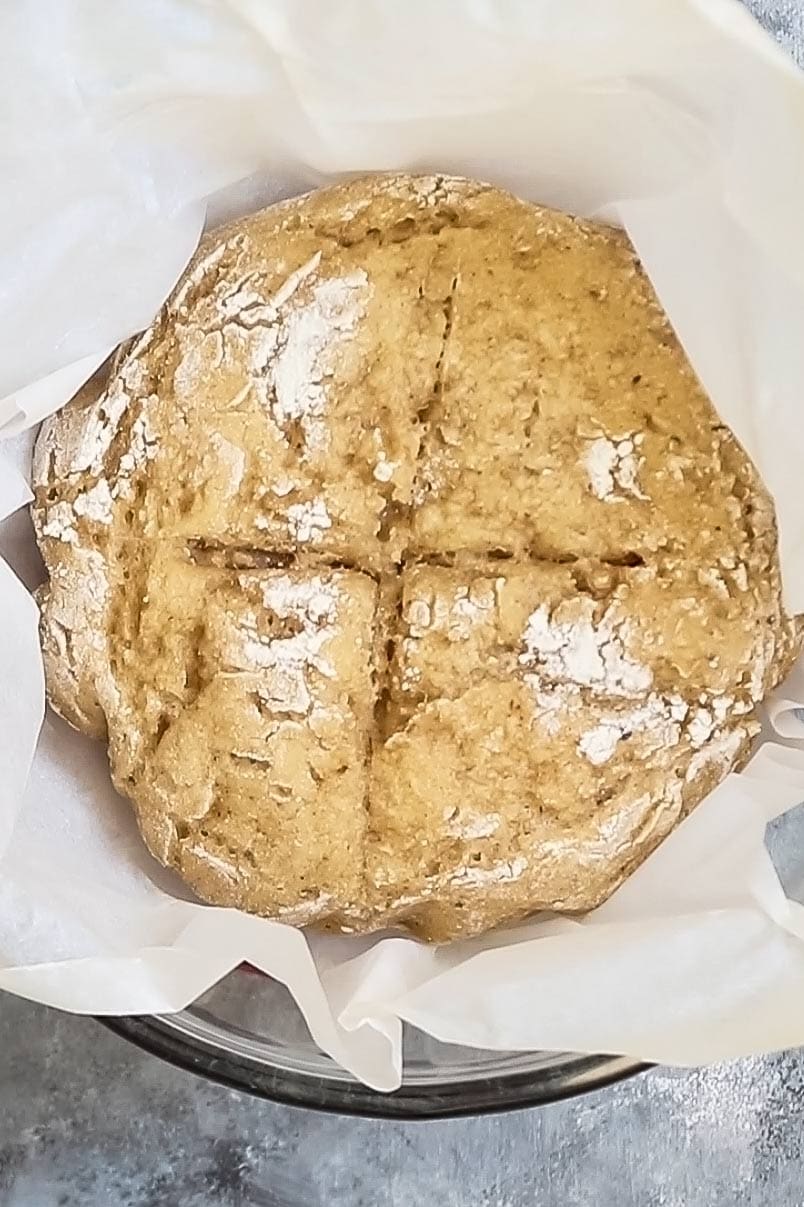
After baking, remove the loaf of bread from the oven and pan/bowl/Dutch oven. Remove it from the parchment paper and let it cool, ideally on a wire rack. Make sure to let it cool completely before slicing it.
Since this is an easy gluten free sourdough bread recipe made with the shortcut of a gluten free flour blend, the bread it produces has a beautiful crispy crust, but the middle is usually slightly gummy (due to the xanthan gum in the blend).
For that reason it is best enjoyed thinly sliced and then toasted. I find it particularly great toasted and then spread with salted butter. But you can also enjoy it for sandwiches or with honey, jam, or nut butters too.
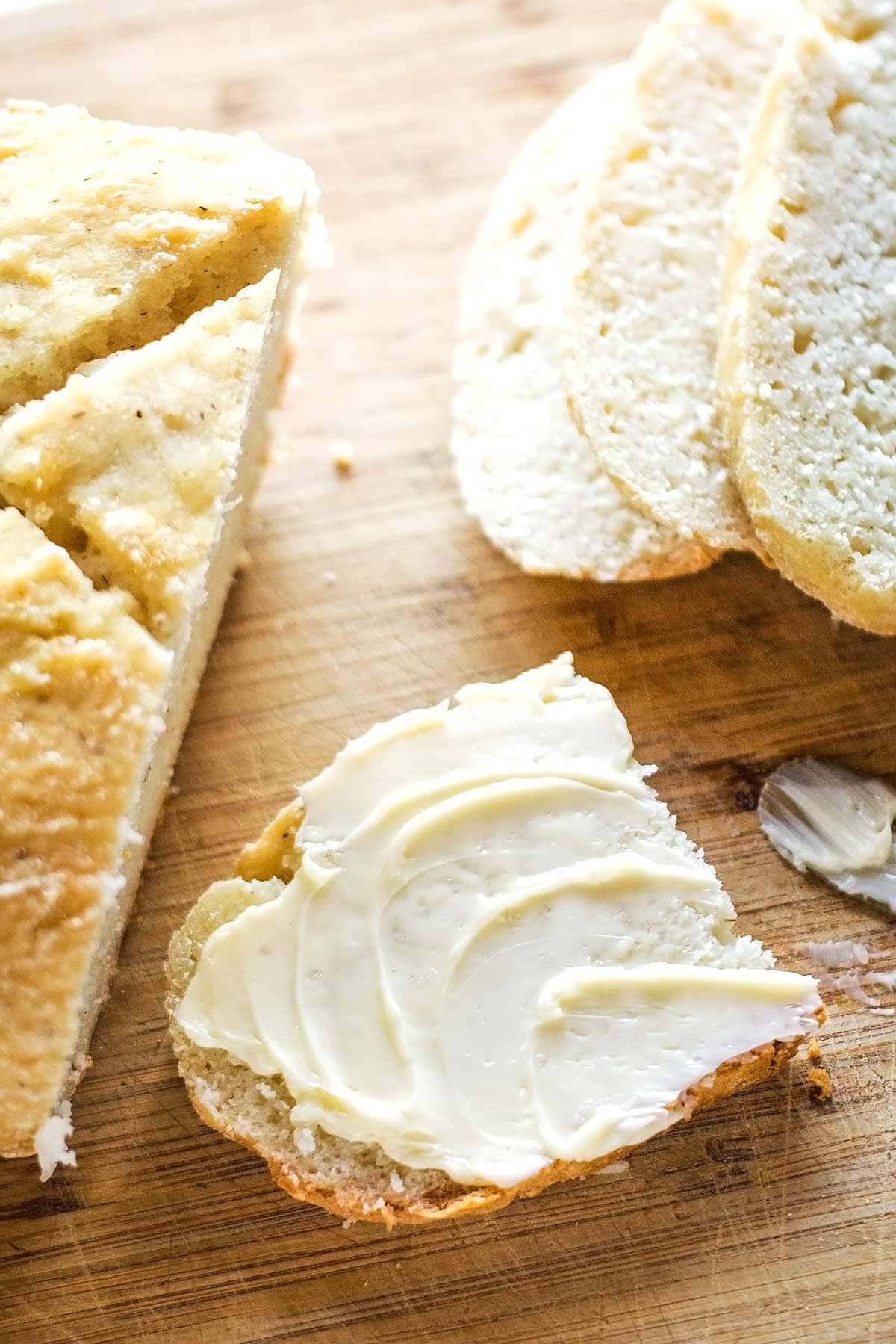
Ways to Vary Your GF Sourdough
Once you have mastered this gluten free sourdough recipe, feel free to experiment in the kitchen and make it your own. You can infuse some seeds into the dough or sprinkle them on top. Alternatively, you can play around with different gluten free flours and try homemade blends for different flavours and textures. Here are some ideas of combinations you could try.
- Knead toasted walnuts and dried cranberries into your bread dough for a more textured bread.
- Make a triple seed bread with sesame seeds, pumpkin seeds, and sunflower seeds on top. Brushing the bread with a little water first can help them stick.
- Add some flax seeds into the dough for a healthier note.
- Try scoring pretty designs on top of your bread including swirls or wheat designs.
Random Questions
Fermentation times vary, but it's generally 12-18 hours during proofing. Observe the dough's significant expansion to determine readiness, especially visible in a transparent bowl.
Wait until it doubles in size, develops bubbles, and becomes active. A "float test" can help – drop a small amount into water; if it floats, it's ready.
Feed daily if actively baking; if not, weekly maintenance suffices. Adjust frequency based on your baking routine to keep the starter lively.
Possible factors include insufficient fermentation, inactive starter, or overmixing. Ensure proper proofing, active starter, and gentle mixing for optimal results.
The best flour for a gluten-free sourdough starter is typically a blend of gluten-free flours like brown rice flour, sorghum flour, or a mix of gluten-free all-purpose flour that does not contain xanthan gum.
Regular sourdough bread contains gluten, but gluten-free sourdough recipes made with gluten-free flours are safe for those with gluten intolerance or celiac disease.
Not all sourdough is gluten-free. Only sourdough bread made with certified gluten-free flours is suitable for gluten-intolerant individuals.
More Gluten Free Recipes You'll Love:
Recipe
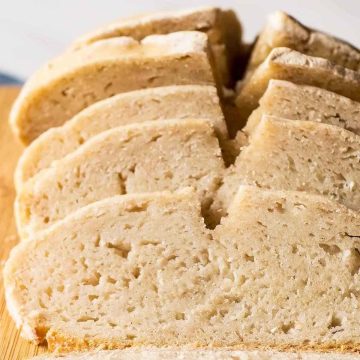
Easy Gluten Free Sourdough Bread
Equipment
- Oven-safe glass bowl (like Pyrex) or Dutch Oven
Ingredients
- 50 g active gluten free sourdough starter *
- 250 g water filtered
- 300 g gluten free flour blend with xanthan gum (I use Bob's Red Mill 1 to 1 baking flour)
- 6 g sea salt
Instructions
- In a large mixing bowl whisk together the gluten free sourdough starter and water until lightly frothy and well combined.
- Add in the gluten free flour and salt. Stir everything together with a spatula until all the flour is incorporated into a ball of dough.
- Cover the bowl (with a lid, large plate, plastic wrap) and let the bread ferment at room temperature for 12-18 hours.
- Preheat your oven to 450°F for 30 minutes with a large, oven-safe glass bowl (Pyrex) or Dutch oven, if you have.
- Sprinkle a generous amount of gluten free flour onto a piece of parchment paper. With the help of a spatula gently turn out the dough onto the floured parchment.
- Sprinkle a little more flour onto the dough and gently reshape it with your hands into a round ball. Let it rest while the oven finished preheating.
- Using oven mitts remove the preheated glass bowl (or Dutch oven) from the oven. Lift the parchment paper with the gluten free sourdough bread ball and lower it into the bowl. Using a sharp knife or lame score an X into the top.
- Cover with an oven-safe lid or aluminum foil. Return the bowl to the oven (carefully, with oven mitts) and bake the bread covered for 30 minutes.
- Then remove the lid/cover and bake another 15-20 minutes. The bread should be lightly browned with a crunchy crust. The internal temperature should reach at least 195°F.
- Remove the bread from the oven and from the bowl. For a better texture, let it cool to room temperature before slicing.
- This gluten free sourdough is best enjoyed sliced and toasted.
Notes
Nutrition
Pin for later?
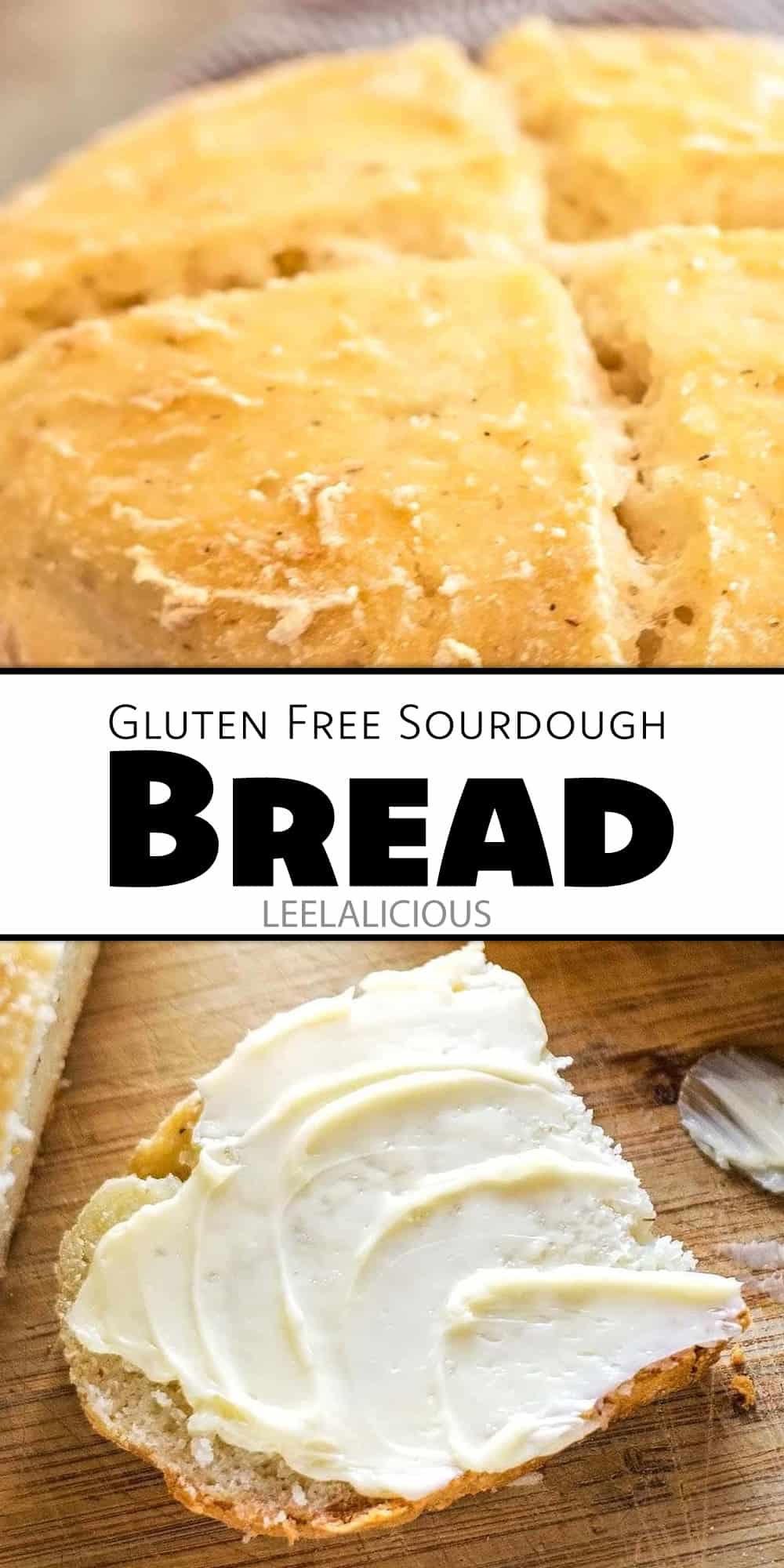




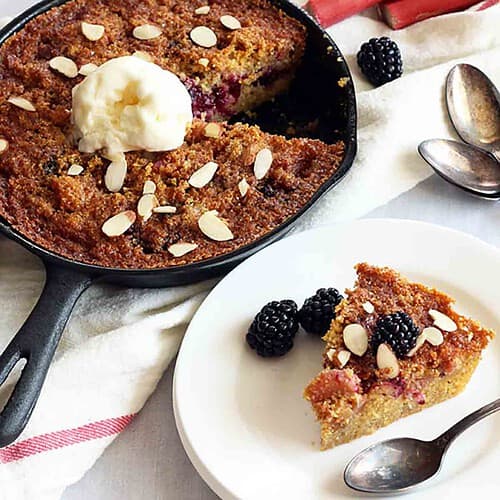
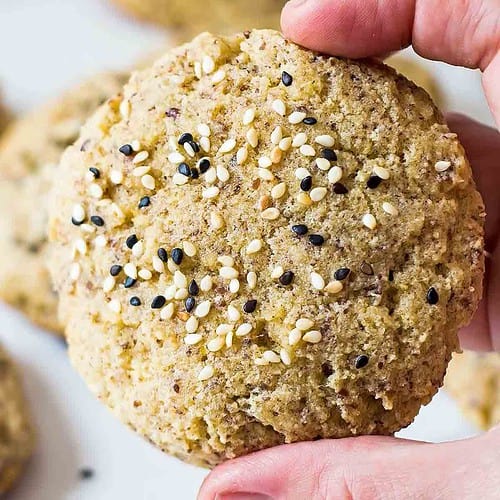
Vicki
Regina,
I have a question. When the gluten-free starter is ready for baking, why do you add the additional 25 gm of GF flour and 25 gm of water to 15 gm of the starter and let it sit for the additional 6-10 hours? Thank you.
Regina | Leelalicious
This note is simply to reflect that the starter should be recently fed and at an active, bubbly stage when making the bread dough. I usually keep my starter in the fridge and only bake bread once a week. I take the starter out of the fridge, and feed it once to activate. Then feed again and use that for the bread dough.